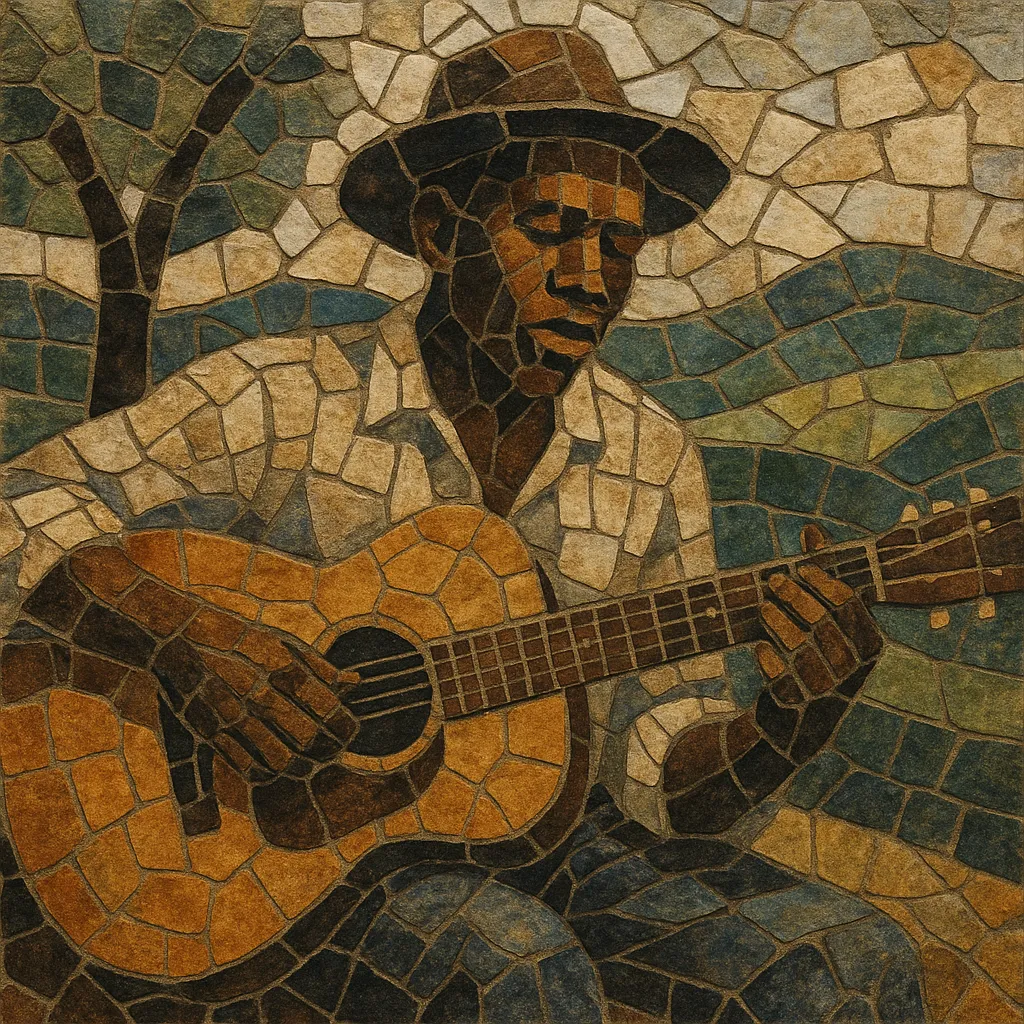
Country blues—also called rural blues or folk blues—is the earliest widely documented form of the blues, rooted in the everyday music-making of African Americans in the rural American South. It typically features a solo singer accompanying themselves on acoustic guitar, with flexible time, expressive vocal delivery, and abundant use of blue notes.
While 12‑bar structures are common, country blues often stretches or compresses measures to fit the lyric, making phrasing elastic and conversational. Regional flavors emerged—Delta (driving, droning thumb bass and slide), Piedmont (ragtime‑inflected fingerpicking), and Texas (looser phrasing and single‑string leads)—but all share storytelling lyrics about work, travel, love, hardship, and spiritual longing.
Country blues grew from African American traditions—work songs, field hollers, spirituals—and from the exchange with Anglo‑American folk ballads heard across the rural South. By the 1910s, itinerant musicians were carrying songs from plantations, levee camps, and juke joints, shaping a style centered on voice and acoustic guitar.
The recording boom of the 1920s captured country blues on so‑called “race records” for labels like Paramount, Okeh, and Victor. Pioneers such as Charley Patton, Blind Lemon Jefferson, and Skip James set templates for regional approaches and repertoires. The Great Depression slowed the industry, but field collectors (notably John and Alan Lomax) documented crucial performances for the Library of Congress, preserving the voices of Lead Belly, Bukka White, and others.
After WWII, many musicians electrified in cities like Chicago, helping shape urban/electric blues and, ultimately, rock and roll. In the 1950s–60s folk revival, rediscovered artists (Mississippi John Hurt, Son House, Skip James) found new audiences at festivals and coffeehouses, inspiring skiffle in the UK and the broader blues/rock boom.
Country blues remains a foundational American art form, informing Chicago and electric blues, country music, folk revival songcraft, singer‑songwriters, and rock. Its repertoire, flexible timing, and guitar vocabulary continue to be studied and performed worldwide.

